 –>
–> 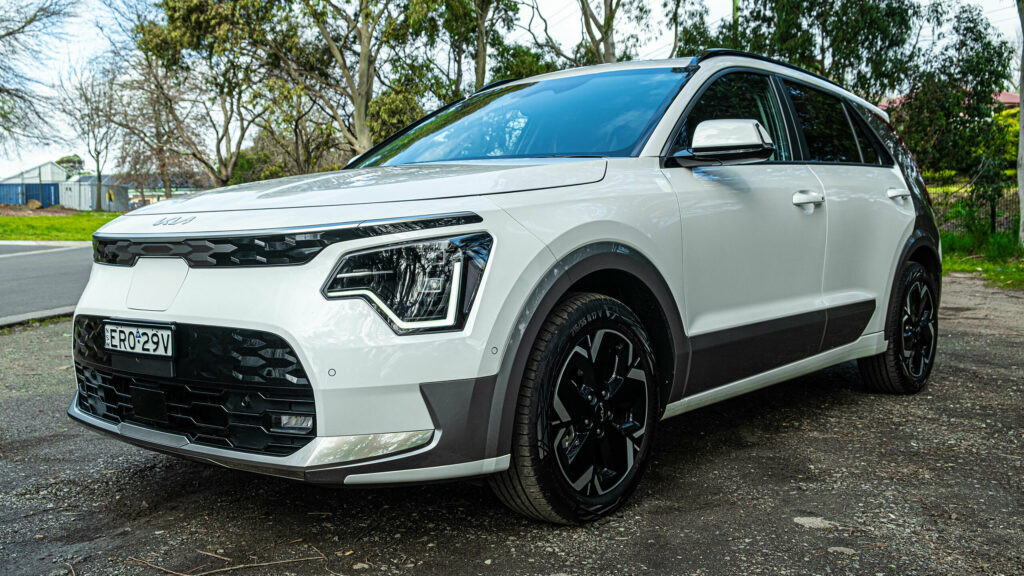
The 2024 Kia Niro EV GT-Line is the most efficient EV that we’ve ever tested
3 hours ago
–>
The Kia EV6 hasn’t been on the market for long but already, it has proven itself to not only be one of the best electric vehicles in its price range, but one of the best EVs on the market regardless of price. But where does this leave the Niro EV?
It’s been a little under two years since the latest-generation Niro was unveiled in combustion, hybrid, and all-electric guises. The first generation Niro was underwhelming to say the least but with the new one, Kia has appeared to distill everything we love about the EV6 into a slightly more compact vehicle with a more traditional SUV shape. Compared to the EV6, however, it has slid under the under-the-radar in EV discussions as of late, prompting us to wonder if it isn’t getting the love that it deserves.
Eager to see what the Niro EV is like, we jumped behind the wheel of one for a week and put it through its paces. What we found was a very well-put-together EV that has many of the same superb credentials as the EV6 but one with a price tag that will likely limit how many are sold.
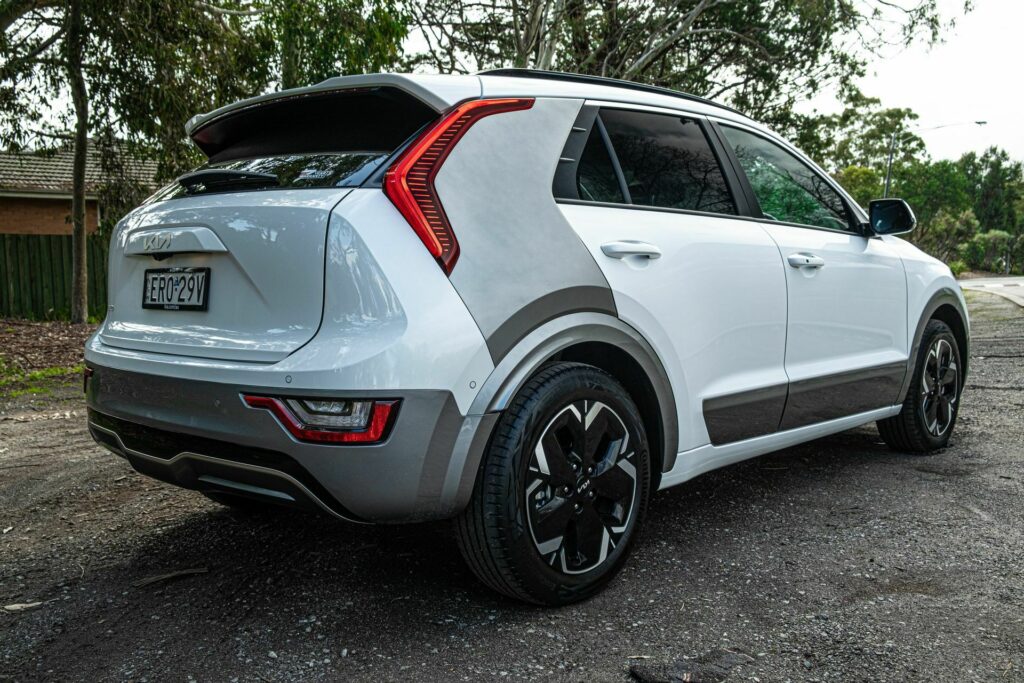
The Kia Niro is only sold in hybrid and EV guises in Australia, both of which are offered in entry-level S and flagship GT-Line trim levels. Our tester was the Niro EV GT-Line that carries with it a AU$72,360 (equal to US$46,845 at current exchange rates) sticker price. That’s a hefty sum given that the Niro Hybrid GT-Line starts at a much more reasonable AU$50,030 ($32,389) and means the EV is just AU$230 ($149) less than the base EV6 Air. It’s also more than AU$7,000 ($4,531) pricier than the Tesla Model Y while the impending Volvo EX30 will start at AU$59,990 ($38,837).
So what do you get for your money?
For starters, the Niro EV is underpinned by the firm’s K5 platform, rather than the Hyundai Group’s Electric-Global Modular Platform (E-GMP) that has underpinned most of its recent EVs. As such, the Niro EV doesn’t get the familiar 77.4 kWh battery of most other EVs from Hyundai, Kia, and Genesis but rather makes do with a 64.8 kWh battery.
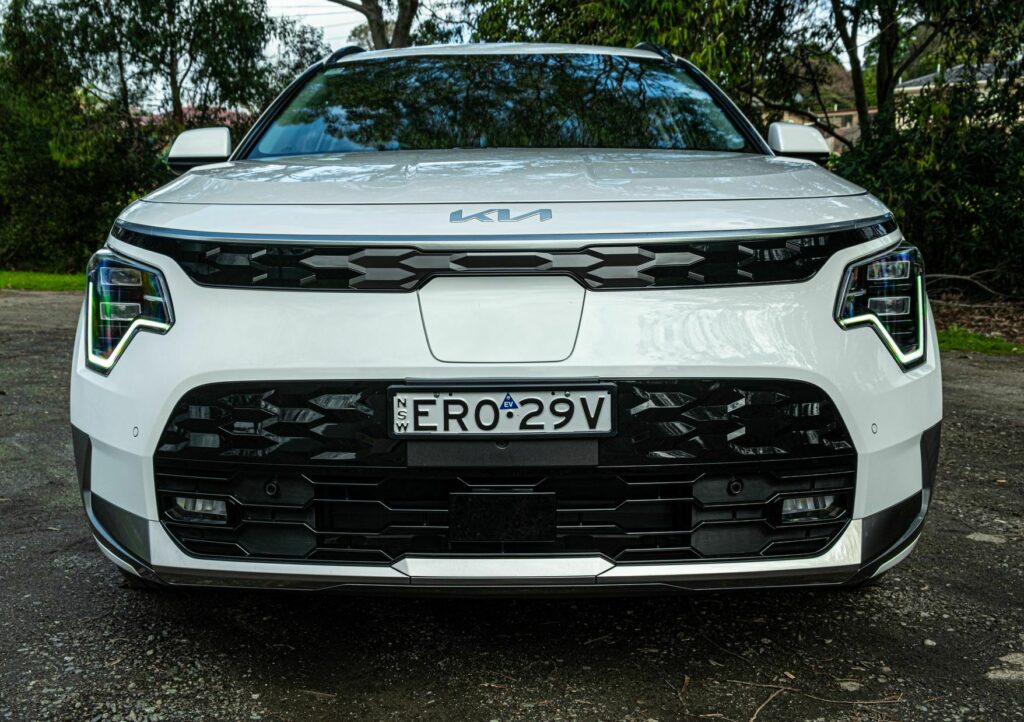
There’s another disadvantage with the car being based on the K5 platform. This means that unlike the EV6 with its 800-volt architecture, the Niro EV only supports 400 volts and when connected to one of the fastest DC chargers out there, needs 43 minutes to charge from 10 to 80%. That’s reasonable in the current market but significantly slower than the 18 minutes that the EV6 needs to charge from 10 to 80%.
The battery pack drives an electric motor that is good for 150 kW (201 hp) and 255 Nm (188 lb-ft) of torque through the front wheels. The SUV requires 7.8 seconds to hit 100 km/h (62 mph).
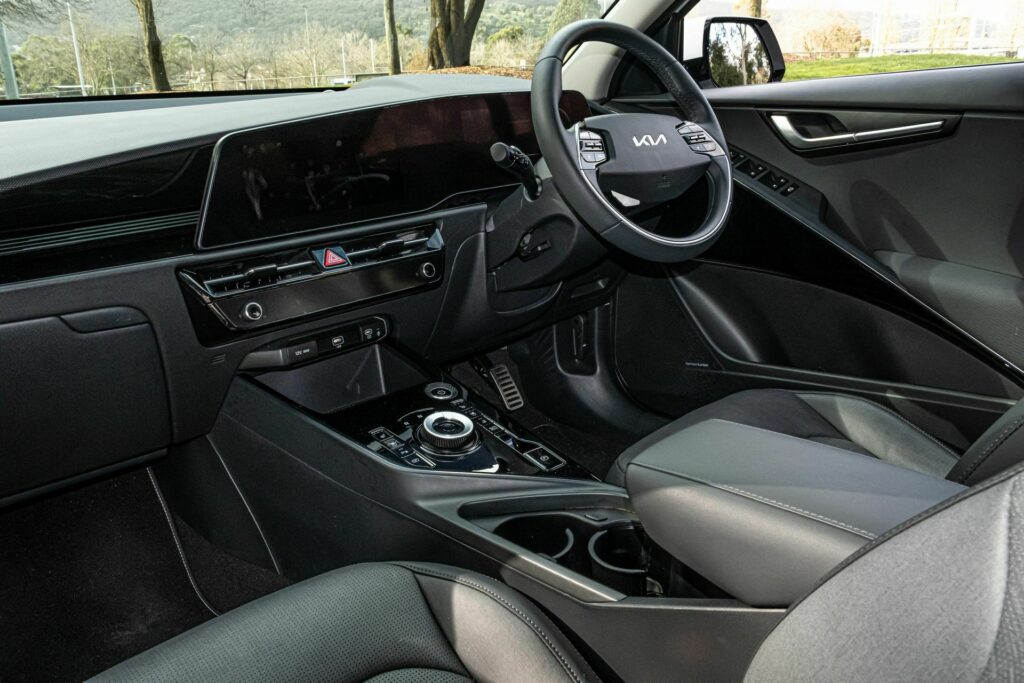
A familiar cabin
The interior of the Niro EV is very similar to the EV6 and that’s a big plus, particularly when shoppers opt for the GT-Line variant. Taking pride of place in the cabin is a two-spoke steering wheel with integrated paddle shifters to control the regenerative braking system. Kia has then given the Niro EV a pair of 10.25-inch screens and while they are slightly smaller than the 12.3-inch displays of the EV6, they feature the same operating system and are just as simple and intuitive to understand. They also support wired Apple CarPlay and Android Auto. Unfortunately, our test car had not received the recent software update that makes Android Auto a full-screen experience. It’s also worth noting that the entry-level Niro Hybrid S has wireless Apple CarPlay and Android Auto.
Elsewhere, the controls for the climate system and important media functions are housed within a small touch bar below the screen. A host of other Kia models have this same touch-bar complete with haptic feedback and we think it is excellent. While some would still like physical buttons and knobs for the HVAC, it’s definitely much better than housing all these controls within the central infotainment display as many automakers are now starting to do.
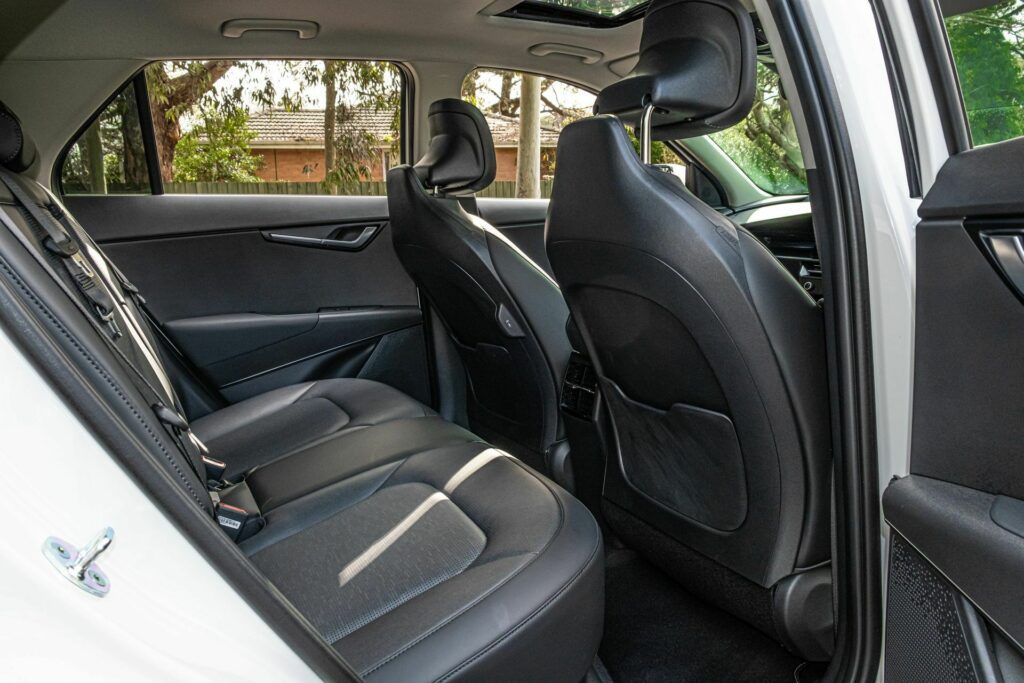
Found in the central tunnel of the Niro EV GT-Line is plenty of piano black plastic, including buttons for the heated and ventilated seats, the heated steering wheel, and both the parking sensors and cameras. We did like the rotary shifter that’s been lifted from the EV6 as well as the inclusion of a wireless phone charging pad. The space in the front row is good, although I did feel like the seats were a little bit too high.
Read: 2023 Kia Niro EV Owners Get 500 kWh Of Free Charging At Electrify America Stations
The second row is also a nice place to spend time but it does not offer as much legroom as the longer EV6. USB-C ports are found on the rear of the front seats and the flat floor at the back means it is possible to comfortably seat three people. There are also two air vents at the rear as well as a 3.6 kW power socket under the rear seats that supports vehicle-to-load functions.
The boot is reasonably spacious with 475 liters (16.7 cubic feet) and 1,400 liters (49.4 cubic feet) with the second row folded down. That first figure is slightly down on the 490 liters (17.3 cubic feet) of the EV6 Air but is more than the 1,270 liters (44.8 cubic feet) it offers with the seats folded down. Other welcome inclusions on the Niro EV GT-Line include alloy sport pedals, customizable ambient lighting, an 8-speaker Harman Kardon audio system, and a 10-inch head-up display.
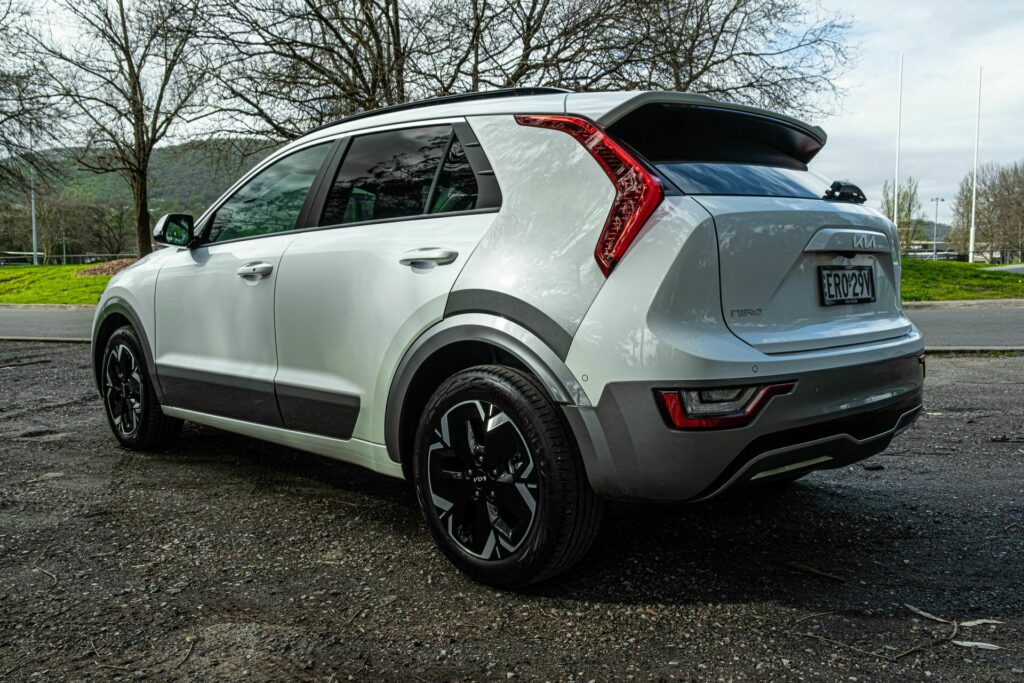
Efficiency, efficiency, efficiency
It’s not often that we are flabbergasted when we get out of a car but that’s exactly what we felt after completing our first drive in the Niro EV GT-Line. This isn’t because we were blown away by its performance or the driving experience as a whole but rather because of how efficient it was.
On our first 60 km (37 miles) drive, roughly 55 km (34 miles) of which was on the highway sitting at 100 km/h (62 mph), the Kia returned just 13.1 kWh/100 km. That’s despite the regenerative braking barely being used and despite Kia stating that it has a consumed rating of 16.2 kWh/100 km. Across our entire week with the car, it averaged 13.5 kWh/100 km on a mixture of suburban roads and highways, making it the most efficient EV I’ve ever tested and by a comfortable margin. As such, Kia’s claimed range figure of 460 km (286 miles) on the WLTP cycle can actually be achieved quite easily and improved upon if you primarily drive in one-pedal mode with the brake regen in its highest setting.
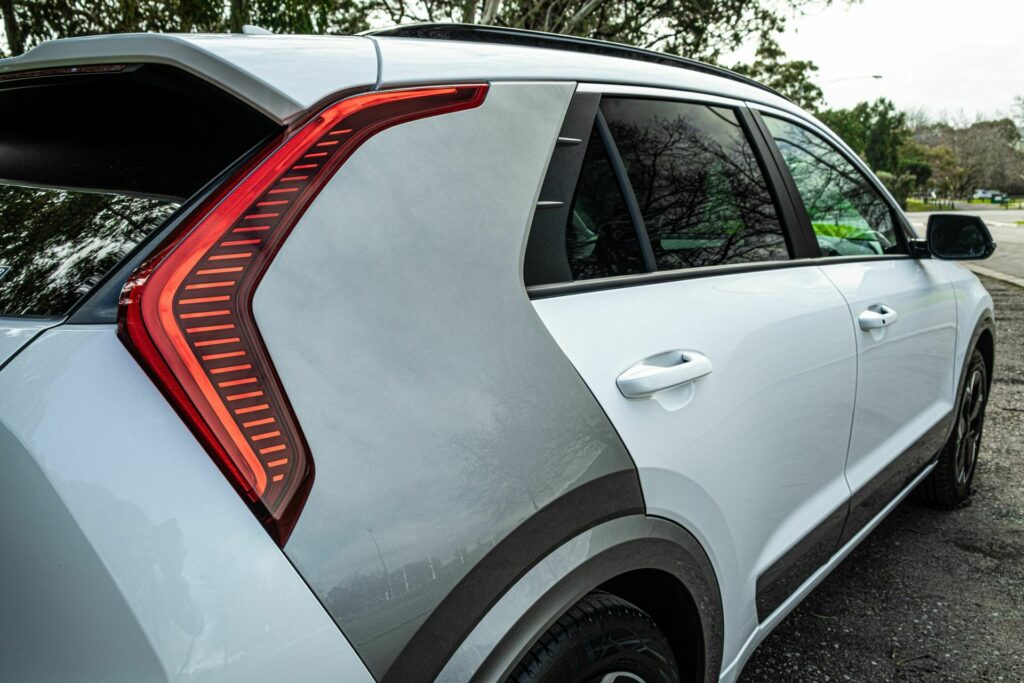
For the most part, the Niro EV GT-Line is a no-nonsense kind of vehicle to drive on an everyday basis. It is very easy to get accustomed to regardless of whether you have prior EV experience or not and feels reasonably light on its feet despite weighing in at a hefty 1,727 kg (3,807 lbs).
The brake regeneration works just as seamlessly in the Niro EV as it does the EV6 and the transition between the regen and the mechanical brakes is almost imperceptible. It is reasonable quiet at highway speeds with minimal levels of intrusive wind and tire noise but did seem a little louder than the EV6. It’s not particularly quick either, although that’s not a surprise given that it makes do with 150 kW, not much for a vehicle of this heft. But, it is spritely enough for day-to-day use.
Kia Australia’s local engineers have tuned the Niro EV’s suspension to suit local roads and while they’ve done a good job, it does remain slightly firmer than some shoppers would expect.
If only it was cheaper
We really enjoyed our time with the Niro EV GT-Line. It looks quirky, is easy to comfortable and drive, and is very efficient. However, the price will likely limit its appeal, particularly when compared to the considerably cheaper Hybrid version. This probably explains why we’ve never seen another Niro EV on the road but have seen plenty of hybrids.
Photo Credits: Brad Anderson/CarScoops


